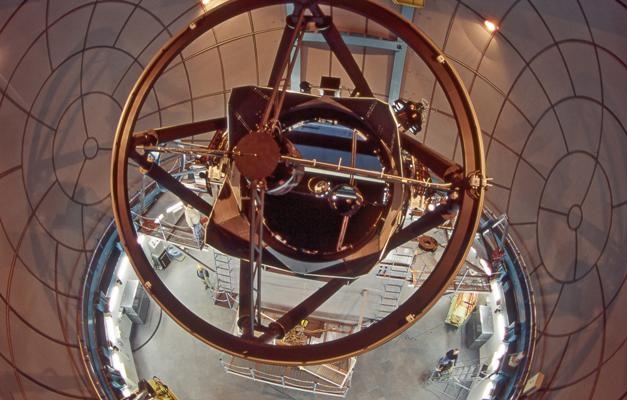From The NSF/ NOAO/NOIRLab (National Optical-Infrared Astronomy Research Laboratory)
8.10.23
Michele Bannister
Senior Lecturer and Rutherford Discovery Fellow, University of Canterbury
Email: michele.bannister@canterbury.ac.nz
Kristen Metzger
Science Writer, Vera C. Rubin Observatory
Email: kristen.metzger@noirlab.edu
Bob Blum
Director for Operations, Vera C. Rubin Observatory, NSF’s NOIRLab
Tel: +1 520-318-8233
Email: bob.blum@noirlab.edu
Željko Ivezić
Professor of Astronomy, University of Washington/AURA
Tel: +1-206-403-6132
Email: ivezic@uw.edu
Charles Blue
NSF’s NOIRLab
Tel: +1 202-236-6324
Email: charles.blue@noirlab.edu
Manuel Gnida
Media Relations Manager, SLAC National Accelerator Laboratory
Tel: +1 650-926-2632
Cell: +1 415-308-7832
Email: mgnida@slac.stanford.edu
Vera C. Rubin Observatory’s [below] Legacy Survey of Space and Time [LSST] will revolutionize Solar System science by revealing a population of previously undiscovered interstellar comets and asteroids passing through our cosmic neighborhood.
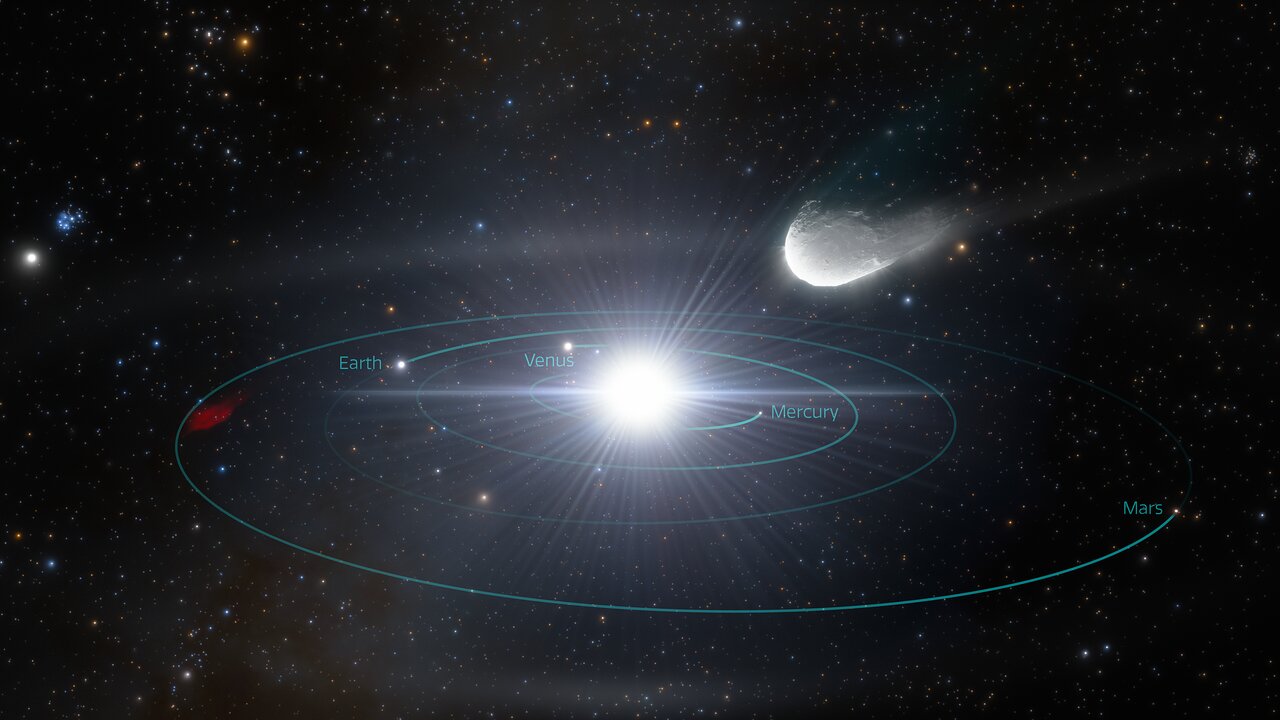
Many as-yet-undiscovered interstellar objects exist throughout our Milky Way Galaxy: comets and asteroids that have been ejected from their home star systems. Some of these objects pass through our Solar System, bringing valuable information about how planetary systems form and evolve. Currently, only two such interstellar visitors have been discovered: 1I/ʻOumuamua and comet 2I/Borisov. Rubin’s upcoming Legacy Survey of Space and Time [LSST] will show us many more.
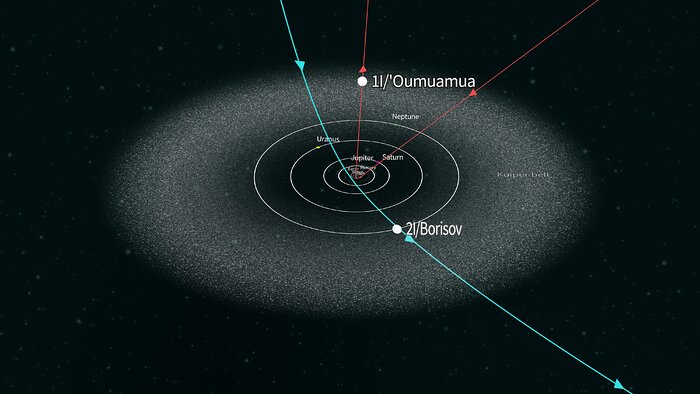
This illustration shows the paths through our Solar System of the two confirmed interstellar objects, Oumuamua in 2017 (formally known as 1I/2017 U1), discovered in 2017, and the comet 2I/Borisov, discovered in 2019. The paths of these objects are markedly different than the orbits of objects in our Solar System, making them easy to differentiate as interstellar objects. Rubin Observatory and the Legacy Survey of Space and Time will provide data that enables scientists to identify many interstellar objects early in the survey.
Credit: J. Pinto/Rubin Observatory/NSF/AURA.
We’ve learned a lot about the biggest, brightest objects in our Solar System using existing instruments and telescopes. However, astronomers like Michele Bannister, Rutherford Discovery Fellow at the University of Canterbury in Aotearoa New Zealand and member of the Rubin Observatory/LSST Solar System Science Collaboration, want to search deeper, for small, faint bodies that originated in planetary systems far beyond our own. These interstellar objects — which were flung from their home systems into the space between stars — are so faint that they have been virtually undetectable. But with the upcoming Legacy Survey of Space and Time (LSST), conducted with Vera C. Rubin Observatory in Chile, scientists are expecting an explosive period of discovery as these faint objects come into view for the first time.
Rubin Observatory is jointly funded by the National Science Foundation (NSF) and the US Department of Energy (DOE). Rubin is a Program of NSF’s NOIRLab, which, along with the DOE’s SLAC National Accelerator Laboratory, will operate Rubin.
The origins of our Solar System lay in a massive swirling cloud of gas and dust that collapsed to form new stars, one of which was our Sun. The stars gobbled up most of the cosmic ingredients, but around each star the remainder formed the small building blocks of planets — called planetesimals — ranging from tens of meters to a few kilometers in size. Some of these coalesced into planets and their moons and rings, but trillions of leftover planetesimals continued to orbit their host stars.
With the aid of observations of our Solar System and computer simulations, scientists speculate that the gravity of larger planets and passing nearby stars often launches most of these remnant planetesimals away from their home systems and out into their galaxies. Traveling through space and not bound to any star, they’re now known as interstellar objects.
“Planetary systems are a place of change and growth, of sculpting and reshaping,” said Bannister. “And planets are like active correspondents in that they can move trillions of little tiny planetesimals out into galactic space.”
If planets are the correspondents, interstellar objects are the telegrams containing valuable information about distant planetary systems and how they formed. And for a short time, some of these messages from afar are right in our cosmic backyard. “A rock from another solar system is a direct probe of how planetesimal formation took place at another star,” said Bannister, “so to actually have them come to us is pretty neat.”
Though astronomers think many interstellar objects exist, and likely pass through our Solar System on a regular basis, only two have been confirmed: ʻOumuamua in 2017 (also known as 1I/2017 U1), and the comet 2I/Borisov in 2019. These were discovered thanks to great timing, a lot of effort, and a little luck — these small, faint interstellar travelers are only visible when they’re close enough to see, and when our telescopes are pointing in the right place at the right time.
“We calculate that there are a whole lot of these little worlds in our Solar System right now,” said Bannister. “We just can’t find them yet because we aren’t seeing faint enough.”
Rubin Observatory will change that. Using an 8.4-meter telescope equipped with the highest resolution digital camera in the world, Rubin will detect fainter interstellar objects than we’ve ever seen before. “It’s as though you suddenly go from being on a little boat bobbing around in the beautiful shallows just off the shore, to now you’re out over the big deep ocean and you can see into all that expanse for the first time,” said Bannister.
Additionally, Rubin’s fast-moving telescope can scan the entire visible sky every few nights, capturing a timelapse view of interstellar objects on their fast journeys through our Solar System.
While we call both ‘Omuamua and 2I/Borisov interstellar objects, they differ in just about every way we can measure. What will the third, or the twentieth, interstellar object look like? Within the first year of Rubin Observatory’s 10-year LSST, scheduled to begin in 2025, scientists expect to get a good idea. “We’re going to go from a study of two individual objects to a population study of at least dozens,” Bannister said. As interstellar objects could come from stars all across the Milky Way, this increase will allow scientists to directly study how planetary systems form at distant stars throughout our galaxy’s history — including at ancient stars that no longer exist.
For now, scientists can only make loose predictions of how many interstellar objects Rubin will reveal. Bannister playfully places her bet on 21, but says we really have no idea yet. Whatever the outcome, Rubin is poised to revolutionize Solar System studies — along with many other areas of astronomy and astrophysics. “It’s going to be one of the gifts that Rubin provides,” she said, “a new history of the Solar System and a greater understanding of where we come from.”
See the full article here.
Comments are invited and will be appreciated, especially if the reader finds any errors which I can correct. Use “Reply”.
five-ways-keep-your-child-safe-school-shootings
Please help promote STEM in your local schools.
What is NOIRLab?
NSF’s NOIRLab (National Optical-Infrared Astronomy Research Laboratory), the US center for ground-based optical-infrared astronomy, operates the international Gemini Observatory (a facility of National Science Foundation, NRC–Canada, ANID–Chile, MCTIC–Brazil, MINCyT–Argentina, and Korea Astronomy and Space Science Institute [한국천문연구원] (KR)), NOAO Kitt Peak National Observatory (KPNO), Cerro Tololo Inter-American Observatory(CL) (CTIO), the Community Science and Data Center (CSDC), and Vera C. Rubin Observatory (in cooperation with DOE’s SLAC National Accelerator Laboratory). It is managed by the Association of Universities for Research in Astronomy (AURA) under a cooperative agreement with NSF and is headquartered in Tucson, Arizona. The astronomical community is honored to have the opportunity to conduct astronomical research on Iolkam Du’ag (Kitt Peak) in Arizona, on Maunakea in Hawaiʻi, and on Cerro Tololo and Cerro Pachón in Chile. We recognize and acknowledge the very significant cultural role and reverence that these sites have to the Tohono O’odham Nation, to the Native Hawaiian community, and to the local communities in Chile, respectively.
 National Science Foundation NOIRLab’s Gemini North Frederick C Gillett telescope at Maunakea Observatory in Hawai’i Altitude 4,213 m (13,822 ft).
National Science Foundation NOIRLab’s Gemini North Frederick C Gillett telescope at Maunakea Observatory in Hawai’i Altitude 4,213 m (13,822 ft).
 The National Science Foundation NOIRLab National Optical Astronomy Observatory Gemini South telescope on the summit of Cerro Pachón at an altitude of 7200 feet. There are currently two telescopes commissioned on Cerro Pachón, Gemini South and the SOAR Telescope — Southern Astrophysics Research Telescope. A third, the Vera C. Rubin Observatory, is under construction.
The National Science Foundation NOIRLab National Optical Astronomy Observatory Gemini South telescope on the summit of Cerro Pachón at an altitude of 7200 feet. There are currently two telescopes commissioned on Cerro Pachón, Gemini South and the SOAR Telescope — Southern Astrophysics Research Telescope. A third, the Vera C. Rubin Observatory, is under construction.
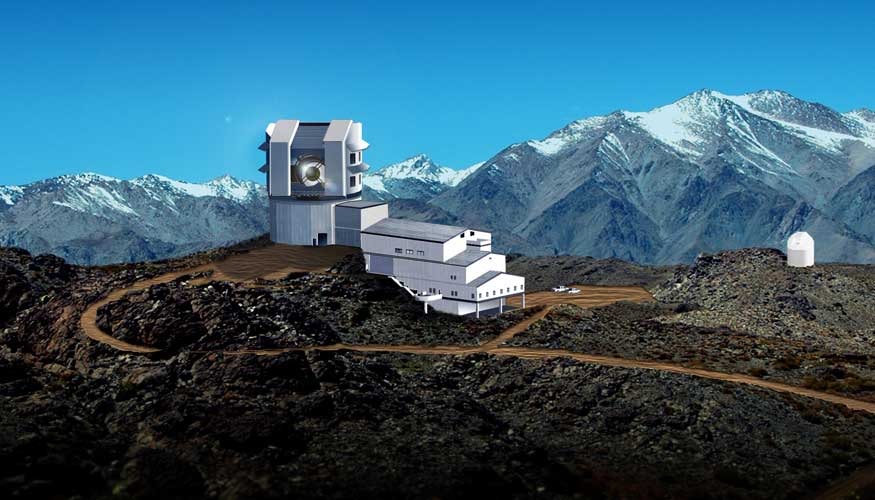 The National Science Foundation NOIRLab National Optical Astronomy Observatory Vera C. Rubin Observatory [LSST] Telescope currently under construction on the El Peñón peak at Cerro Pachón Chile, a 2,682-meter-high mountain in Coquimbo Region, in northern Chile, alongside the existing NSF NOIRLab NOAO The Association of Universities for Research in Astronomy (AURA) Gemini South Telescope and Southern Astrophysical Research Telescope.
The National Science Foundation NOIRLab National Optical Astronomy Observatory Vera C. Rubin Observatory [LSST] Telescope currently under construction on the El Peñón peak at Cerro Pachón Chile, a 2,682-meter-high mountain in Coquimbo Region, in northern Chile, alongside the existing NSF NOIRLab NOAO The Association of Universities for Research in Astronomy (AURA) Gemini South Telescope and Southern Astrophysical Research Telescope.

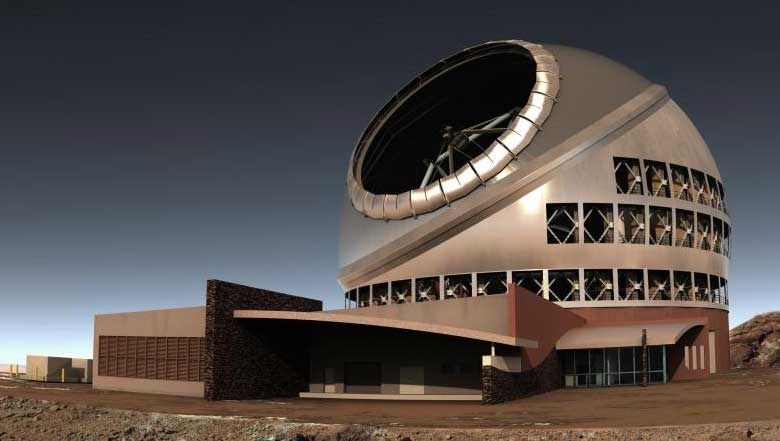
 National Science Foundation NOIRLab National Optical Astronomy Observatory Kitt Peak National Observatory on Kitt Peak of the Quinlan Mountains in the Arizona-Sonoran Desert on the Tohono O’odham Nation, 88 kilometers (55 mi) west-southwest of Tucson, Arizona, Altitude 2,096 m (6,877 ft), annotated.
National Science Foundation NOIRLab National Optical Astronomy Observatory Kitt Peak National Observatory on Kitt Peak of the Quinlan Mountains in the Arizona-Sonoran Desert on the Tohono O’odham Nation, 88 kilometers (55 mi) west-southwest of Tucson, Arizona, Altitude 2,096 m (6,877 ft), annotated.
 NSF NOIRLab NOAO Cerro Tololo Inter-American Observatory(CL) approximately 80 km to the East of La Serena, Chile, at an altitude of 2200 meters.
NSF NOIRLab NOAO Cerro Tololo Inter-American Observatory(CL) approximately 80 km to the East of La Serena, Chile, at an altitude of 2200 meters.
The NOAO-Community Science and Data Center
This work is supported in part by The Department of Energy Office of Science.
The Dark Energy Survey is a collaboration of more than 400 scientists from 26 institutions in seven countries.
_____________________________________________________________________________________
The Dark Energy Survey
Dark Energy Camera [DECam] built at the DOE’s Fermi National Accelerator Laboratory.
 NOIRLab National Optical Astronomy Observatory Cerro Tololo Inter-American Observatory(CL) Victor M Blanco 4m Telescope which houses the Dark-Energy-Camera – DECam at Cerro Tololo, Chile at an altitude of 7200 feet.
NOIRLab National Optical Astronomy Observatory Cerro Tololo Inter-American Observatory(CL) Victor M Blanco 4m Telescope which houses the Dark-Energy-Camera – DECam at Cerro Tololo, Chile at an altitude of 7200 feet.
 NOIRLabNSF NOIRLab NOAO Cerro Tololo Inter-American Observatory(CL) approximately 80 km to the East of La Serena, Chile, at an altitude of 2200 meters.
NOIRLabNSF NOIRLab NOAO Cerro Tololo Inter-American Observatory(CL) approximately 80 km to the East of La Serena, Chile, at an altitude of 2200 meters.
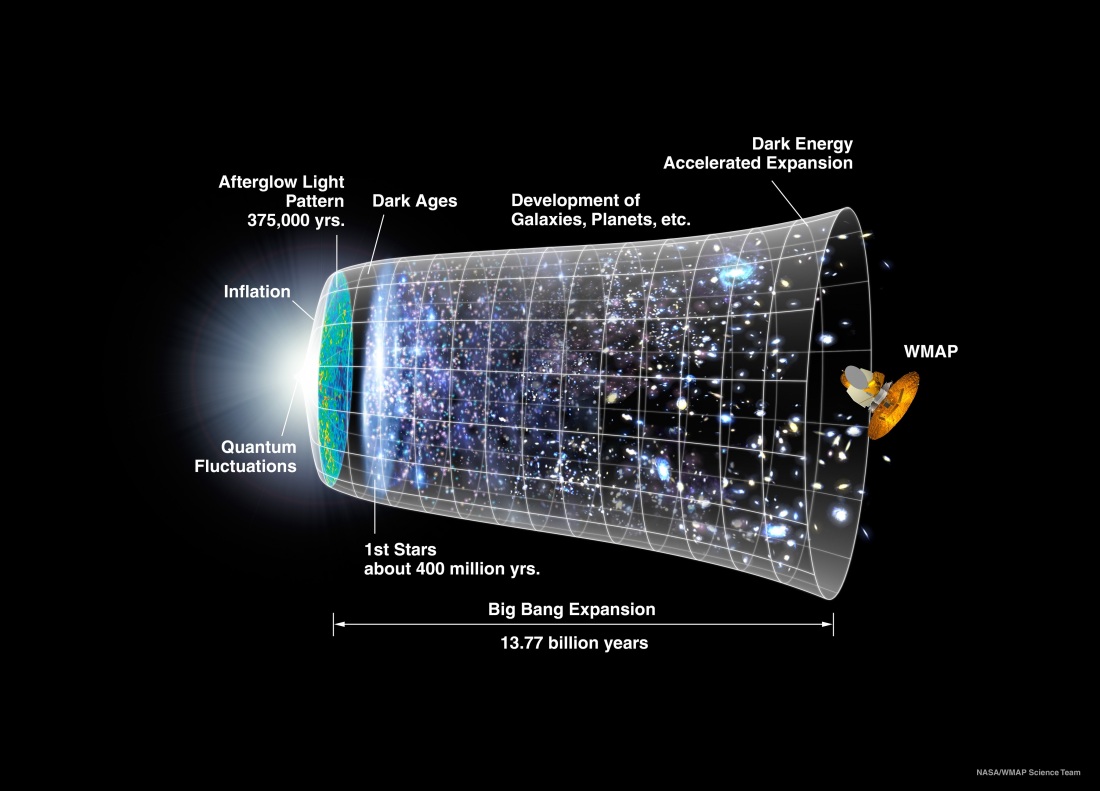 Timeline of the Inflationary Universe WMAP.
Timeline of the Inflationary Universe WMAP.
The Dark Energy Survey is an international, collaborative effort to map hundreds of millions of galaxies, detect thousands of supernovae, and find patterns of cosmic structure that will reveal the nature of the mysterious dark energy that is accelerating the expansion of our Universe. The Dark Energy Survey began searching the Southern skies on August 31, 2013.
According to Albert Einstein’s Theory of General Relativity, gravity should lead to a slowing of the cosmic expansion. Yet, in 1998, two teams of astronomers studying distant supernovae made the remarkable discovery that the expansion of the universe is speeding up.
 Saul Perlmutter (center) [The Supernova Cosmology Project] shared the 2006 Shaw Prize in Astronomy, the 2011 Nobel Prize in Physics, and the 2015 Breakthrough Prize in Fundamental Physics with Brian P. Schmidt (right) and Adam Riess (left) [The High-z Supernova Search Team] for providing evidence that the expansion of the universe is accelerating.
Saul Perlmutter (center) [The Supernova Cosmology Project] shared the 2006 Shaw Prize in Astronomy, the 2011 Nobel Prize in Physics, and the 2015 Breakthrough Prize in Fundamental Physics with Brian P. Schmidt (right) and Adam Riess (left) [The High-z Supernova Search Team] for providing evidence that the expansion of the universe is accelerating.
To explain cosmic acceleration, cosmologists are faced with two possibilities: either 70% of the universe exists in an exotic form, now called Dark Energy, that exhibits a gravitational force opposite to the attractive gravity of ordinary matter, or General Relativity must be replaced by a new theory of gravity on cosmic scales.
The Dark Energy Survey is designed to probe the origin of the accelerating universe and help uncover the nature of Dark Energy by measuring the 14-billion-year history of cosmic expansion with high precision. More than 400 scientists from over 25 institutions in the United States, Spain, the United Kingdom, Brazil, Germany, Switzerland, and Australia are working on the project. The collaboration built and is using an extremely sensitive 570-Megapixel digital camera, DECam, mounted on the Blanco 4-meter telescope at Cerro Tololo Inter-American Observatory, high in the Chilean Andes, to carry out the project.
Over six years (2013-2019), the Dark Energy Survey collaboration used 758 nights of observation to carry out a deep, wide-area survey to record information from 300 million galaxies that are billions of light-years from Earth. The survey imaged 5000 square degrees of the southern sky in five optical filters to obtain detailed information about each galaxy. A fraction of the survey time is used to observe smaller patches of sky roughly once a week to discover and study thousands of supernovae and other astrophysical transients.
_____________________________________________________________________________________
Funding for the DES Projects has been provided by the US Department of Energy Office of Science, The National Science Foundation, Ministry of Science and Education of Spain, The Science and Technology Facilities Council (UK), The Higher Education Funding Council for England (UK), The Swiss Federal Institute of Technology ETH Zürich [Eidgenössische Technische Hochschule Zürich)](CH), The National Center for Supercomputing Applications at The University of Illinois at Urbana-Champaign, The Kavli Institute of Cosmological Physics at The University of Chicago, Center for Cosmology and AstroParticle Physics at The Ohio State University, Mitchell Institute for Fundamental Physics and Astronomy at The Texas A&M University, Brazil Funding Authority for Studies and Projects for Scientific and Technological Development [Financiadora de Estudos e Projetos ](BR) , Carlos Chagas Filho Foundation for Research Support of the State of Rio de Janeiro [Fundação Carlos Chagas Filho de Amparo à Pesquisa do Estado do Rio de Janeiro](BR), Ministry of Science, Technology, Innovation and Communications [Ministério da Ciência, Tecnolgia, Inovação e Comunicações](BR), German Research Foundation [Deutsche Forschungsgemeinschaft](DE), and the collaborating institutions in the Dark Energy Survey.
The National Center for Supercomputing Applications at The University of Illinois at Urbana-Champaign provides
supercomputing and advanced digital resources for the nation’s science enterprise. At NCSA, The University of Illinois faculty, staff, students, and collaborators from around the globe use advanced digital resources to address research grand challenges for the benefit of science and society. NCSA has been advancing one-third of the Fortune 50® for more than 30 years by bringing industry, researchers, and students together to solve grand challenges at rapid speed and scale.
The DOE Office of Science is the single largest supporter of basic research in the physical sciences in the United States and is working to address some of the most pressing challenges of our time.





